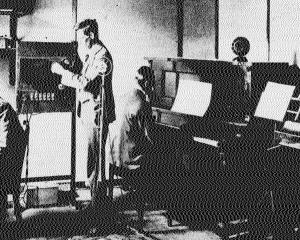Jean Balchin looks at the importance of digital accessibility.
What do you think about when you hear the word “accessibility”? Perhaps a lift or ramp springs to mind; braille, or special seats on the bus. Perhaps you think of disabled parking spaces, quiet hours at your local supermarket, or the chairlift that your grandmother uses.
However, you probably don’t think of accessibility as you’re scrolling through Facebook or uploading your holiday pics to Instagram. But web accessibility is just as important as physical accessibility and is often overlooked when it comes to website design and social media use.
What exactly is web accessibility? In simple terms, web accessibility is the inclusive practice of ensuring that no barriers impede the access of people with disabilities to websites on the World Wide Web. Digital accessibility, to call it by another name, is the practice of designing and creating content which can be used by everyone, regardless of their cognitive ability or motor skills.
Contrary to some popular beliefs and misconceptions, people with disabilities are more than capable of leading full, productive lives. A lot of them do so through the use of assistive technology tools (software and hardware) that help one navigate a website and interact with its content.
These tools include screen magnifiers, screen readers, alternative keyboards, eye tracking tools, and more. But these assistive tools can only work if the websites they are navigating are accessible. Without alternative text or image descriptions for example, a screen-reader cannot provide a user with any useful information about an image.
A steadily increasing amount of legislation around the world requires organisations to follow a unified set of Web Content Accessibility Guidelines (WCAG 2.0). But the importance of digital accessibility goes beyond legal regulations. According to WHO, over a billion people live with some form of disability. The WHO also estimates that hearing loss affects about 360million people, or 5.3% of the world’s population, and that 285million across the globe are visually impaired.
For people with vision impairments, colours, and the contrast between colours, on posters and other visuals can matter tremendously, as can the size of text, or the choice of fonts. For people who are blind, image descriptions, alt tags, title tags, and audio descriptions for video content can mean the difference between “getting” the joke or not; between understanding the full message, or being left out in the dark, for the want of a better phrase.
For those with hearing impairments, subtitles or signing on video content is integral to providing a full and comprehensive experience. For people who have difficulty using a keyboard or mouse, auto-completion of forms and the ease with which a user can navigate a webpage is of the utmost importance. For people with dyslexia or other learning difficulties, plain language and instructional diagrams make things much easier to understand.
Most of these accommodations are easy enough, and may be implemented without decreasing the usability of a site for non-disabled people. To be purely pragmatic about it, ensuring one’s website is accessible makes a lot of economic sense, in that ignoring the various disabled communities means overlooking millions of potential customers, clients, or fans.
Moreover, web accessibility can benefit everyone, including people with a slow internet connection, older people with changing abilities due to ageing, people using devices with small screens, and people with temporary disabilities such as a broken wrist or a misplaced hearing aid.
When setting up a website or putting together a social media campaign, accessibility should be considered from the very start. It takes far more time and effort to fix accessibility issues in existing websites than it does to create a fully accessible site from the offset.
Naturally, this may take more time to begin with, but with practice, the design and implementation of inclusive web content will become second-nature. Finally, it is vitally important to involve people with a range of disabilities at every stage of the design and implementation process.
There are numerous useful tools one can use to ensure one’s website is clear and accessible, including A11Y Compliance Platform by Bureau of Internet Accessibility, the Accessibility Checklist by Elsevier and Accessibility Developer Tools by Google Accessibility.
A simple Google search will pull up a plethora of exciting tools for you to gauge your website’s accessibility. There are also a few quick questions you can ask yourself when publishing something on social media or creating a new page: Is the language clear and easy to understand? Is the content still stable when one uses a screen magnifier? Does it work with a screen reader?
After all, as Tim Berners-Lee, the inventor of the World Wide Web said, “The power of the Web is in its universality. Access by everyone regardless of disability is an essential aspect.”
Our world is digitally transforming by the second. We, as social media users and consumers of digital information, have an obligation to ensure that our digital communications are inclusive for all users, regardless of language, location, or ability.
-Jean Balchin, a former English student at the University of Otago, is studying at Oxford University after being awarded a Rhodes Scholarship.










